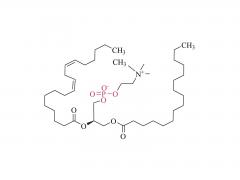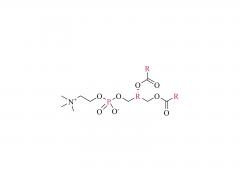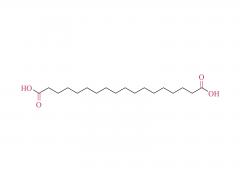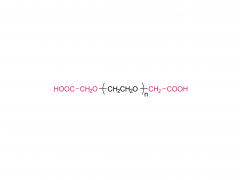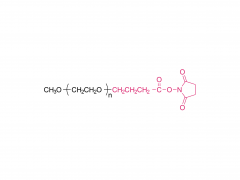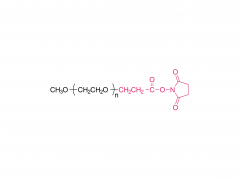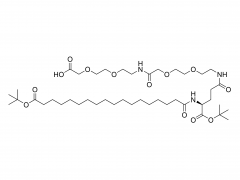mPEG-bALD (Methoxypolyethylenglykolbutyraldehyd) ist ein monofunktionelles agglomeriertes Ethylenglykol (PEG)-Derivat und wird häufig in Bereichen wie der biomedizinischen Forschung, Arzneimittelverabreichungssystemen, der Proteinmodifikation und der Entwicklung von Nanomaterialien eingesetzt. Im Folgenden finden Sie eine detaillierte Einführung zu dieser Verbindung:
1. Grundlegende Eigenschaften
Name:
Monomethoxypolyethylenglykolbutyraldehyd, mPEG-Butyraldehyd
Abkürzung:
mPEG-bALD
Eigenschaften:
Weißer Feststoff oder Pulver (kann bei hohem Molekulargewicht halbfest sein)
Molekulargewichtsbereich:
350 Da bis 40.000 Da. Gängige Spezifikationen sind 1K, 2K, 5K, 10K, 20K usw.
Löslichkeit:
Löslich in Wasser und den meisten organischen Lösungsmitteln.
2. Chemische Struktur und Reaktionseigenschaften
Die Struktur von mPEG-bALD besteht aus einer PEG-Kette mit einer Methoxygruppe und einer Butylaldehydgruppe (-CHO) am Ende. Zu den Reaktionsmerkmalen gehören:
Selektive Modifikation:
In Gegenwart eines Reduktionsmittels (wie Natriumcyanoborhydrid) kann die Buturonidgruppe eine reduktive Aminierungsreaktion mit der N-terminalen Aminogruppe von Proteinen oder Peptiden eingehen, wodurch eine stabile sekundäre Aminbindung entsteht.
Milde Reaktionsbedingungen:
Der optimale pH-Bereich liegt bei 6–9,5 (kann auf 5–10 erweitert werden) und die Reaktionszeit beträgt normalerweise 6–24 Stunden.
Hohe Spezifität:
Im Vergleich zu NHS-Ester-PEG-Derivaten weist mPEG-bALD eine höhere Selektivität für N-terminale Aminogruppen auf und reduziert Nebenreaktionen.
3. Hauptanwendungen
Protein-PEGylierung:
Es wird zur spezifischen N-terminalen Modifikation verwendet, um die Aktivität und strukturelle Stabilität von Proteinen aufrechtzuerhalten.
Erhöhen Sie die Halbwertszeit und Biokompatibilität von Arzneimitteln und verringern Sie die Immunogenität.
Arzneimittelabgabesystem
Es wird zum Aufbau von PEG-Nanopartikeln, Liposomen oder Polymermizellen verwendet, um die Löslichkeit und Zielgenauigkeit von Arzneimitteln zu verbessern.
Immobilisierte Enzymtechnologie
Die Immobilisierung von Enzymen wird durch die Reaktion von Aldehydgruppen mit Aminogruppen auf der Oberfläche des Trägers erreicht.
Materialwissenschaft
Es wird zur Oberflächenmodifizierung verwendet, um die Biokompatibilität und die Anti-Protein-Adsorptionsleistung von Materialien zu verbessern.










